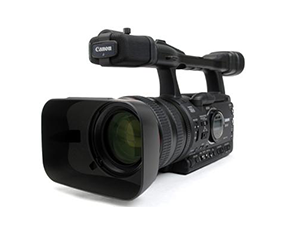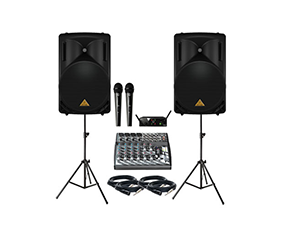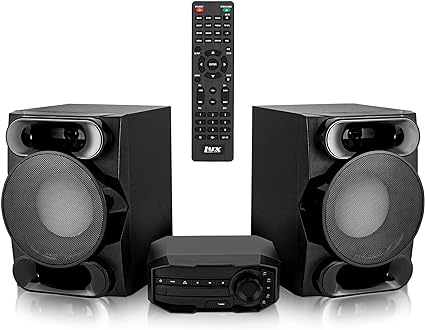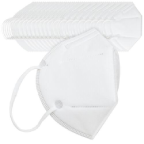|
This article was written by the New
York Institute of Photography, America’s oldest and largest photography school. NYI provides professional-level training
via home study for photographers who want to give their images a professional
look, and perhaps earn extra income with their camera.
SEVEN TIPS FOR GREAT WEDDING PICTURES
 Editor's Note: This article is intended to give you some tips on how to take better pictures at a wedding where you might be a guest. It is not intended as a complete lesson on Wedding Photography for the professional wedding photographer. Here's why... Editor's Note: This article is intended to give you some tips on how to take better pictures at a wedding where you might be a guest. It is not intended as a complete lesson on Wedding Photography for the professional wedding photographer. Here's why...
Professional wedding photography is a demanding photographic discipline. For example, in the regular NYI Complete Course in Professional Photography, the student studies the printed NYI lesson on Wedding Photography, listens to three hours of audiotape, and watches two videotapes – all devoted to wedding photography. We use several renowned wedding photographers as mentors including Monte Zucker, perhaps the best-known wedding photographer and teacher in the world! What's more, if the student wants to go on and specialize in wedding photography and become a professional wedding photographer, he or she is given additional texts to read, additional audio programs to listen to, and also special training in the business of wedding photography. Objective: To train the student so that he or she is fully prepared to get into the business of wedding photography...and succeed!
To give you an idea how it works, one of our most recent graduates, Brent C. from Utah, just sent NYI this note along with the certificate for his graduation:
"Thank you very much for all you've done for photography. I have enjoyed this Course and I'm satisfied with what I've learned. I have loved photography for many years and I thought I had a grasp on what made a great image.
As I started this Course I realized that I had a lot to learn. I took this course seriously and have begun a small portrait and wedding business. I've already made enough money to payback my NYI tuition and most of the camera equipment I own.
I have enjoyed the sections on exposure, lighting, film and the tapes I received from my advisor especially. My favorite part of the Course however was the videos with Monte Zucker.
Why are so many students willing to take this specialized extra training? Because they know that many top-level professional wedding photographers make a profit of $2,000 or more on every wedding they shoot. The arithmetic is easy. If the wedding photographer can book 35 weddings a year and clear $2,000 on each of them, that's $70,000 income for about 40 days of work, mostly on Saturdays. Not bad!
 Here's master wedding photographer Hy Rosen in action. Hy is one of
the mentors in NYI's Wedding Photography training program. Here's master wedding photographer Hy Rosen in action. Hy is one of
the mentors in NYI's Wedding Photography training program.
In this article we don't intend to turn you into a professional wedding
photographer. Rather, we assume you may be a guest at some wedding soon,
you want to bring your camera along, and you hope to capture a few great
photos of the Happy Couple and your friends and family.
Here are seven tips that will help you take great wedding photographs:
TIP ONE: Stay out of the way of the professional
photographer.
Chances are, the couple that is getting married has spent lots of money
to hire a reputable professional. The photographer has a big job to do —
and a big responsibility to do it right and get all the important shots
- all in a limited time. So you don't want to get in the professional's
way and hamper his or her activities.
 For example, if the photographer is taking posed portraits
of the bride, the groom, or their family members, don’t try to also take
a photo of each pose the photographer sets up. He or she is doing a job.
You and your camera will certainly be in the way, even if you try to be
unobtrusive. What's more, the pro wants to sell a print of each pose to
the couple. Chances are, with the equipment that he or she is using, the
results will be great, and the couple will still buy a photo from the pro
even though you take the same shot. But, if you offer the same shot free
to the couple — based on the pose and lighting the pro set up - the pro
may lose a sale. This isn't fair. It's his pose. It's his lighting. It should
be his print! For example, if the photographer is taking posed portraits
of the bride, the groom, or their family members, don’t try to also take
a photo of each pose the photographer sets up. He or she is doing a job.
You and your camera will certainly be in the way, even if you try to be
unobtrusive. What's more, the pro wants to sell a print of each pose to
the couple. Chances are, with the equipment that he or she is using, the
results will be great, and the couple will still buy a photo from the pro
even though you take the same shot. But, if you offer the same shot free
to the couple — based on the pose and lighting the pro set up - the pro
may lose a sale. This isn't fair. It's his pose. It's his lighting. It should
be his print!
So don't interfere with the pro’s posed pictures. Don't worry, you'll have
lots and lots of other opportunities...many of which the pro probably won't
be able to get.
TIP TWO: If you want to take pictures in the church,
sit in an aisle seat.
Chances are you won't take many pictures before the ceremony — after all,
you're a guest (or perhaps a member of the wedding party). So you'll be
plenty busy before the ceremony socializing, and then taking your seat and
waiting for the ceremony to get underway. Let's assume, however, that you
have your camera with you and you want to take some pictures during the
ceremony. Okay, take an aisle seat.
 But don't start firing away until you know what's permitted and what's
not permitted in that particular house of worship. Understand, some ministers,
priests, and rabbis don't care a hoot about cameras and flashes. They expect
the pro and the guests to blaze away during the ceremony. Others permit
pictures, but not flash. And some will make you feel the wrath of the Almighty
if you so much as touch your camera! But don't start firing away until you know what's permitted and what's
not permitted in that particular house of worship. Understand, some ministers,
priests, and rabbis don't care a hoot about cameras and flashes. They expect
the pro and the guests to blaze away during the ceremony. Others permit
pictures, but not flash. And some will make you feel the wrath of the Almighty
if you so much as touch your camera!
How to know? Our advice is to watch the pro. The pro will know the Rules
of the House. If he or she is moving freely about the church and using a
flash on camera, then chances are you can take some flash-pictures too.
If he takes pictures, but doesn't use flash, you can probably do the same.
If other guests start to take pictures as the bride goes down the aisle,
and the presiding cleric doesn't say something at the start of the ceremony,
then you may as well join in.
Assuming it's OK to take pictures, then, our tip is that you seat yourself
along the center aisle. Obviously, if you were in the middle of a row, most
of your pictures will show the backs of pews and heads, but not much of
the bride and groom. Seated on the aisle, however, you can get a nice tight
frame of the couple.
TIP THREE:
Actually, this "Tip" offers two tips concerning the important shots to get
“at the church.” Obviously, these tips are relevant only if you are permitted
to use your camera at the church.
 1. Should you try to photograph during the ceremony
cherished moments like the “I do's,” the slipping on of the wedding ring,
the first kiss, the blessing, or (at Jewish weddings) the breaking of the
glass? This really depends upon how close you are to the action. A good
picture should pretty much fill the frame with the action. If you're seated
way back and you're not using a telephoto lens, the likelihood is that the
bride and groom will be mere specks in your picture. If so, our advice is
to either forego taking any shots during the ceremony (no law says you can't
just sit back and enjoy the moment) or take a shot or two "for memory's
sake." If, on the other hand, it’s a small wedding and you can get close
to the action and fill the frame, by all means take the shots! 1. Should you try to photograph during the ceremony
cherished moments like the “I do's,” the slipping on of the wedding ring,
the first kiss, the blessing, or (at Jewish weddings) the breaking of the
glass? This really depends upon how close you are to the action. A good
picture should pretty much fill the frame with the action. If you're seated
way back and you're not using a telephoto lens, the likelihood is that the
bride and groom will be mere specks in your picture. If so, our advice is
to either forego taking any shots during the ceremony (no law says you can't
just sit back and enjoy the moment) or take a shot or two "for memory's
sake." If, on the other hand, it’s a small wedding and you can get close
to the action and fill the frame, by all means take the shots!
2. While you can photograph them coming down the aisle
before the ceremony, your best shots will be when they come back up the
aisle after the ceremony. Here's why. First, the bride and the groom come
down the aisle separately before the ceremony. While there's nothing wrong
with getting pictures of them individually as they enter, remember that
you will have the back of the church as your background. Second, don't bother
to take pictures after they pass you. You want to capture the expressions
on their faces, not the back of their heads.
But you definitely want to capture them coming up the aisle after the ceremony.
You'll get their happy expressions. You'll have the altar as your background.
And the Happy Couple will undoubtedly look less nervous and more radiant.
TIP FOUR: Many of the best pictures taken
at weddings are portraits.
In today's fast-paced society, there are only a few events that cause
families to gather together — mainly, weddings and funerals. Without getting
into the subject of funerals, we can safely say that most weddings are joyous
occasions, and offer you lots of opportunities to take pictures of distant
family and friends.
People make the wedding and the party that follows. And when it comes
to “people pictures” you've got great opportunities. We said earlier that
you'll be able to take great photos at the event that the pro won't. Among
these opportunities are portraits of friends and family. After all, you
know them, you know who's near-and-dear to you — and the pro doesn't. So
here's your chance to shine. They're all dressed up and having a good time,
and you have nearly unlimited photo opportunities.
Most of these opportunities occur at the reception after the wedding. A
few words of advice:
 First, if you want to photograph a couple dancing, have them stop and
pose for a second. First, if you want to photograph a couple dancing, have them stop and
pose for a second.
Second, when you want to shoot a person or a small group, give them a moment
to get composed.
Third, if you're photographing a group at a table (more on this in a moment),
wait till they finish chewing, take the glasses and cutlery out of their
hands, watch out for clutter in the foreground, and use your flash.
Fourth, whenever you photograph two or more people together, try to show
a relationship between them. Get them close together. If you're taking a
picture of a parent and child, have one put an arm around the other. Have
family members show affection for each other.
Fifth, whenever you take a portrait of a person or group, get up close and
fill the frame with your subjects.
TIP FIVE: Set up "table shots" the way the pros do.
Our resident wedding photography expert, NYI Dean Chuck DeLaney, author
of the comprehensive consumer guide to wedding photography, Wedding
Photography and Video: The Bride and Groom's Guide (Allworth Press),
points out that professional "table shots" — the shots of each tableful
of guests seated at the reception meal — are rarely purchased by the Happy
Couple. In fact, most pros don't even bother taking those pictures unless
the couple specifically requests them.
Here's another opportunity for you and your camera. Chances are you know
some or all of the people with whom you're seated. So why not take a picture
of them? Here's how to handle it like a pro: Ask about half of the guests
seated at the table to leave their seats and stand behind the other half
of the guests. In other words, clear one side of the table and have the
people from that side stand behind the people on other side, who remain
seated. If you've got some elderly guests at the table, let them stay seated
and move the younger ones in behind them.
By moving half the people out of their seats, you'll be able to fill your
horizontal frame with two rows of people. But be careful here. Avoid showing
the entire table in the foreground - it's probably a mess! Instead, concentrate
on filling the frame of your photo with people, and eliminate the clutter
on the table by not showing the tablecloth, dirty dishes, smudged napkins,
etc.
TIP SIX: Don't be bashful. Use the disposable camera
at your table.
The past decade ushered in the era of the "disposable" camera – you know,
the type of camera you can buy at supermarkets and drugstores. Would you
believe, these are the fastest-selling cameras in the country? Last year,
over 170 million of them were sold in the U.S. alone! [By the way, the photo
industry hates the term “disposable” and prefers to call them “single-use”
cameras. At NYI, just to be difficult, we call them “cardboard” cameras.
None of these names is really accurate. They're really not “single-use”
or “disposable” cameras because these cameras are typically recycled many
times. And they're really not “cardboard” cameras because the cardboard
is merely a colorful covering for a plastic body. So all the names are inaccurate.
So until someone comes up with a better name, we'll continue to call them
"cardboard" cameras.]
Back to the wedding. It has become popular to put a cardboard camera, usually
the type that includes a built-in flash unit, on each table at the reception
with the idea that the guests at that table will use the 27 frames of film
to take photos in and around their table, and the bride and groom will develop
the film and have the photos that are created to enjoy and possibly augment
their wedding album.
The problem is that at many weddings no one gets the ball rolling. Or the
guest who does take up the camera doesn't know how to take good pictures
with it. Since you know what to do, we suggest you take command. Show the
other people at your table who express any interest how to charge the flash,
how to advance the film, take a few pictures yourself, and then pass the
camera to someone else.
Encourage the other users to get close and fill the frame with the subject.
Warn them, however, that the cardboard cameras probably can't focus closer
than four feet and that the flash is only good out to about twelve feet.
So alert them to stay in that range when they use the camera. You'll be
doing the bride and groom a real service and they'll be grateful, even if
they never know the effort you made.
TIP SEVEN:
While you may want to capture those “scripted” moments like the toasts,
the cake cutting, and the bouquet-tossing, you may be better off turning
away from the action and capturing "reaction" shots of the faces of guests. 
A wedding reception is a party. There's lots of food and music and dancing.
But most of the action is hard to photograph, so we have suggested you concentrate
on portraits. What about those "scripted" moments like the Best Man's toast,
or the cake cutting, or the bride's bouquet toss? At these moments, you
have two choices: You can, if you like, try to capture them with your camera.
But your pictures are likely to be duplicates of what the pro captures.
A better idea might be to concentrate on the faces of family members and
friends during these important moments. Aim to capture “reaction shots,”
that is, candid portrait photos of people feeling strong emotion as they
watch their loved ones at this important moment. Again, the pro is not going
to get these shots. He's concentrating on the action. Here's a perfect opportunity
for you to capture some great shots he can't get!
If you follow these seven tips, you'll get great results at the weddings
you attend this summer. So bring along your camera...and enjoy.
|








































 Editor's Note: This article is intended to give you some tips on how to take better pictures at a wedding where you might be a guest. It is not intended as a complete lesson on Wedding Photography for the professional wedding photographer. Here's why...
Editor's Note: This article is intended to give you some tips on how to take better pictures at a wedding where you might be a guest. It is not intended as a complete lesson on Wedding Photography for the professional wedding photographer. Here's why... Here's master wedding photographer Hy Rosen in action. Hy is one of
the mentors in NYI's Wedding Photography training program.
Here's master wedding photographer Hy Rosen in action. Hy is one of
the mentors in NYI's Wedding Photography training program.  For example, if the photographer is taking posed portraits
of the bride, the groom, or their family members, don’t try to also take
a photo of each pose the photographer sets up. He or she is doing a job.
You and your camera will certainly be in the way, even if you try to be
unobtrusive. What's more, the pro wants to sell a print of each pose to
the couple. Chances are, with the equipment that he or she is using, the
results will be great, and the couple will still buy a photo from the pro
even though you take the same shot. But, if you offer the same shot free
to the couple — based on the pose and lighting the pro set up - the pro
may lose a sale. This isn't fair. It's his pose. It's his lighting. It should
be his print!
For example, if the photographer is taking posed portraits
of the bride, the groom, or their family members, don’t try to also take
a photo of each pose the photographer sets up. He or she is doing a job.
You and your camera will certainly be in the way, even if you try to be
unobtrusive. What's more, the pro wants to sell a print of each pose to
the couple. Chances are, with the equipment that he or she is using, the
results will be great, and the couple will still buy a photo from the pro
even though you take the same shot. But, if you offer the same shot free
to the couple — based on the pose and lighting the pro set up - the pro
may lose a sale. This isn't fair. It's his pose. It's his lighting. It should
be his print!  But don't start firing away until you know what's permitted and what's
not permitted in that particular house of worship. Understand, some ministers,
priests, and rabbis don't care a hoot about cameras and flashes. They expect
the pro and the guests to blaze away during the ceremony. Others permit
pictures, but not flash. And some will make you feel the wrath of the Almighty
if you so much as touch your camera!
But don't start firing away until you know what's permitted and what's
not permitted in that particular house of worship. Understand, some ministers,
priests, and rabbis don't care a hoot about cameras and flashes. They expect
the pro and the guests to blaze away during the ceremony. Others permit
pictures, but not flash. And some will make you feel the wrath of the Almighty
if you so much as touch your camera!  1. Should you try to photograph during the ceremony
cherished moments like the “I do's,” the slipping on of the wedding ring,
the first kiss, the blessing, or (at Jewish weddings) the breaking of the
glass? This really depends upon how close you are to the action. A good
picture should pretty much fill the frame with the action. If you're seated
way back and you're not using a telephoto lens, the likelihood is that the
bride and groom will be mere specks in your picture. If so, our advice is
to either forego taking any shots during the ceremony (no law says you can't
just sit back and enjoy the moment) or take a shot or two "for memory's
sake." If, on the other hand, it’s a small wedding and you can get close
to the action and fill the frame, by all means take the shots!
1. Should you try to photograph during the ceremony
cherished moments like the “I do's,” the slipping on of the wedding ring,
the first kiss, the blessing, or (at Jewish weddings) the breaking of the
glass? This really depends upon how close you are to the action. A good
picture should pretty much fill the frame with the action. If you're seated
way back and you're not using a telephoto lens, the likelihood is that the
bride and groom will be mere specks in your picture. If so, our advice is
to either forego taking any shots during the ceremony (no law says you can't
just sit back and enjoy the moment) or take a shot or two "for memory's
sake." If, on the other hand, it’s a small wedding and you can get close
to the action and fill the frame, by all means take the shots! First, if you want to photograph a couple dancing, have them stop and
pose for a second.
First, if you want to photograph a couple dancing, have them stop and
pose for a second.






